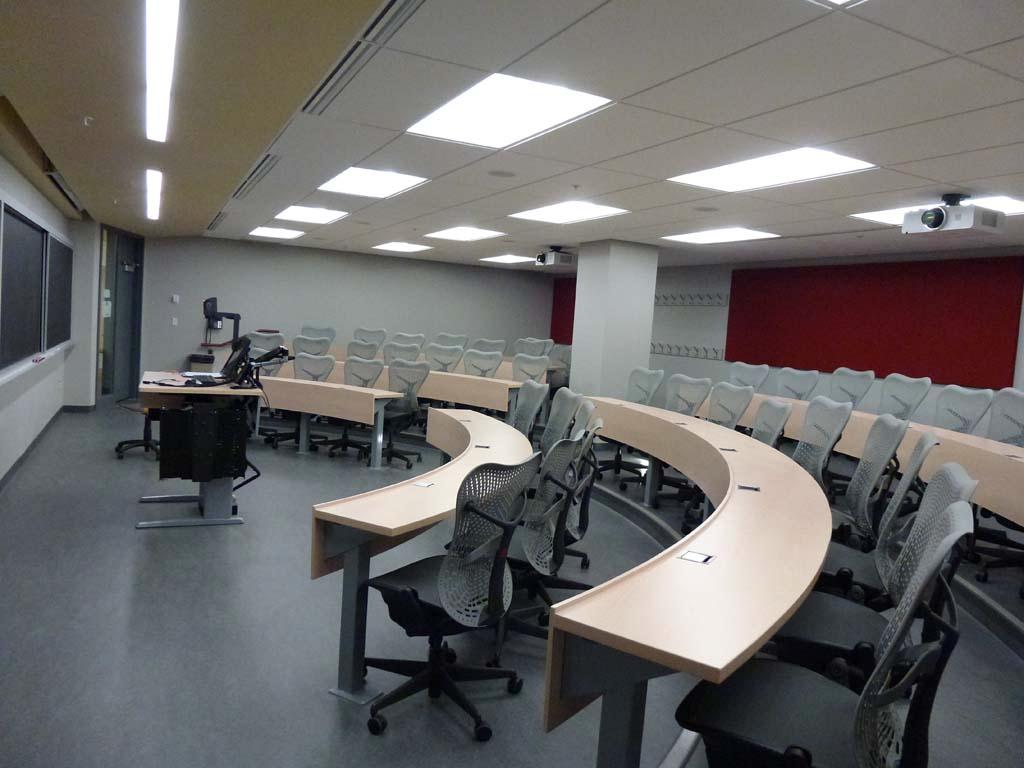
Location
Capacity
55 students
Alignment with Principles for Designing Teaching and Learning Spaces
Academic Challenge
- Layout: Substantial work surfaces for notebooks, laptops, and textbooks
- Furniture: Comfortable, adjustable-height chairs on wheels permit students to work individually or in groups.
- Technologies: Access to resources: Tabletop plugs for student laptops, LMS, internet (via student laptops). Multiple sources and screens for simultaneous display of different learning materials.
- Acoustics: Acoustic design to avoid distraction from outside and inside sources
- Lighting/colour: Appropriate lighting for individual work.
Learning with Peers
- Layout: Students can move about classroom with ease due to centre and side aisles. Unobstructed sightlines.
- Furniture: Chairs on wheels permit students to turn and discuss with those nearby, supporting a variety of collaborative learning approaches.
- Acoustics: Sound zones support multiple simultaneous conversations among students.
- Lighting/colour: Different lighting patterns and levels support different learning activities.
Experiences with Faculty
- Layout: Instructor is not limited to the “front of the room” and instead has access to all students due to unobstructed sightlines, side aisles and an only slightly sloped floor.
- Furniture: The podium does not interfere with sightlines or movement, and has a large surface for instructional materials. Chairs on wheels support different teaching strategies.
- Technologies: Dual-source projection, multiple classroom technology sources (document camera, data projector, computer, Sympodium, Blu-Ray/DVD player, etc.) and multiple screens permit display of different learning materials.
- Acoustics: Sound zones ensure that not only are students able to hear the instructor, but that the instructor is also able to hear the students. Wireless audio amplification available for instructors.
- Lighting/colour: Lighting patterns support multiple types of teaching tasks.
Campus Environment
- University standards have been applied, including improvements to lighting and IT consistent with teaching and learning needs.
- Designed for all populations using the space: well-lit, with standardized room controls to facilitate use of multiple classrooms. Slope of room was reduced to increase ease of movement within the space.
- Classrooms that incorporate elements of active and collaborative learning are part of a vision for campus learning spaces of many different sizes.
High-Impact Practices (HIPs)
- Both physical and virtual affordances help maximize HIPs for student learning within and beyond this classroom.
IT instructions
https://classroom-av.ncs.mcgill.ca/?buildingId=5&roomId=428
Photograph before renovation

